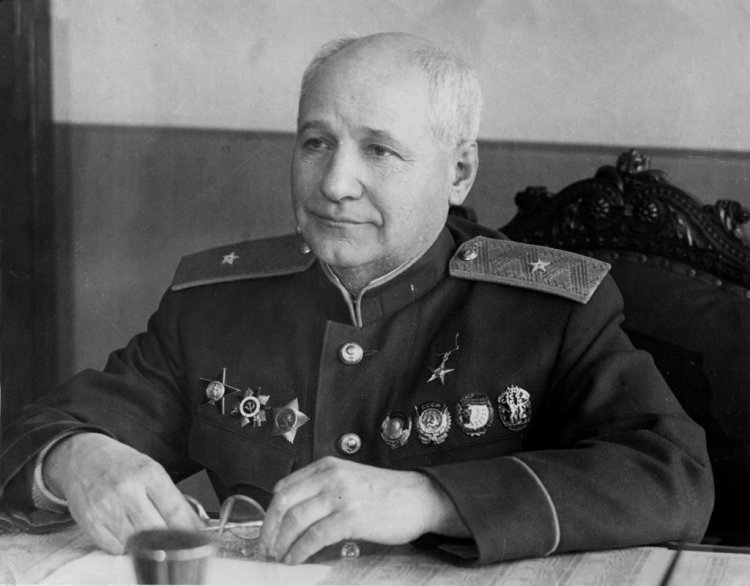Official:
Andrey Nikolaevich Tupolev. October 29 (November 10), 1888 – December 23, 1972. Russian and Soviet aircraft engineer, academician of the Academy of Sciences of the USSR. Hero of Labor, Triple Hero of Socialist Labor, Laureate of the Lenin Prize, four Stalin Prizes and the State Prize.
Life and Work:
1. He managed the designing of more than 100 airplanes, 70 of them were mass-produced. Everyone knows the proud letters ANT and Tu – both abbreviations are for aircrafts created by Andrey Nikolaevich Tupolev.
2. The future aircraft engineer was born into the family of a provincial notary in the village of Pustomazovo of Tver Province and graduated from a gymnasium in Tver.
3. Science and technology enchanted Tupolev since childhood. He did not resist their spell and entered Imperial Technical School known in the Soviet times as Moscow Higher Technical School. There, he immediately signed up for the aeronautical group ran by Nikolay Zhukovsky and hopelessly fell in love with aviation.
4. In 1911, student Tupolev was arrested for participation in meetings and leaflet distribution. He was soon released, but expelled from the school for an indefinite period. Which ended in 1914.
5. A year later, the talented student was asked to head the hydroplane department of the Duks aircraft plant.
6. In 1917, Tupolev was made head of the payroll department of the Airforce Control Bureau. He continued to collaborate with Zhukovsky and became his closest student and assistant.
7. Later Tupolev will thank his teacher generously: he will transfer Central Aerohydrodynamics Institute, which they had created together, from Moscow to Moscow Oblast, and personally select a place for it near Tupolev's country house in Ilyinskoe. He will also name the town, that will grow around the Institute, after the father of Russian aviation – Zhukovsky.
8. It is obvious to us now that airplanes must be made of metal, but light metal – not steel, but duralumin. But, back in the 20s, it was a revolutionary idea. And the organizer of the revolution in Russian aircraft engineering was Tupolev.
9. Tupolev became head of a construction bureau in all-metal aircraft construction and organized production of the first Soviet aviation composite metal – duralumin-type alloy. And constructed all of his famous ANTs, which were used in all the great flights of the 30s.
10. In 1934, Tupolev created the world's biggest airplane – eight-engine ANT-20 Maxim Gorky. It could have been used as an agitational, passenger, transport and bomber plane, it could have been used as moveable headquarters for the establishment. But it was not: it crashed during a display flight on the 18th of May, 1935, when an I-5 fighter plane started doing a vertical loop around it. The loop turned out to be really deathly – the planes crashed into each other. Tupolev mourned the death of his creation as if it was his real child.
11. The very year, when Chkalov and his team did the legendary flight over the North Pole on an ANT-25, Tupolev was accused of espionage and arrested right in his office.
12. Thankfully, he was not executed, but used wisely: he worked for a special construction bureau that was later called “Tupolev's shady company.” When Tupolev, who had already been imprisoned for a year, was asked to head the team of so-called Central Construction Bureau 29 of NKVD, he did not agree until he made sure his wife was free and his children were with her.
13. After Tupolev's arrest, NKVD started spreading the rumor that Tupolev's drawings were used to construct the new Messerschmitt fighter plane. In 1940, Messerschmitt 110 was shown in Moscow, and brought to the Central Aerodrome from Tupolev's bureau. Unafraid of high-rank NKVD officials, Tupolev commented sarcastically, “At last, I have seen my plane.”
14. In his bureau, Tupolev created the Tu-2 strike aircraft, which Tupolev's convicted assistants called “Verochka,” hinting at their faith (the word “vera” is Russian for faith) in speedy release. They were indeed released soon after the beginning of World War II.
15. Tupolev joked once again – the first name of the plane was ANT-58, after notorious Article 58, that was the basis for his imprisonment.
16. In 1955, Tupolev was rehabilitated – and here goes another remarkable coincidence: that was the year when the first Soviet jetliner Tu-104 started to fly. It was built unbelievably fast – in 1954, it was only a project. It was because crafty Tupolev did not build it from scratch, but transformed the Tu-16 bomber into a passenger plane.
17. In 1968, new horizons were achieved: the first display flight of the world and USSR's first supersonic passenger liner Tu-144. The testing of the prototype of Franco-British Concorde will start in two months. Between them, there was also the Tu-95 – the first atomic bomb carrier.
18. Tupolev's coworkers recall that he was an independent and decisive man. Once, he was given a categorical order to take to the air a new aircraft by the time of another scheduled party congress. Tupolev suggested that the congress was rescheduled. After the suggestion was rejected, when the commission came to the aerodrome, they saw two helicopters keeping a fuselage in the air.
19. Well-known aircraft engineers and scientists proudly called themselves Tupolev's students: V.M. Petlyakov, P.O. Sukhoi, V.M. Myasischev, M.L. Mil, S.A. Lavochkin and his own son A.A. Tupolev.
20. In 1973, after Tupolev's death, his name was given to Kazan Aviation Institute. Now it is Kazan State Technical University named after A.N. Tupolev.
21. There in Kazan, two monuments to Tupolev were erected. Another one can be found in Kimry – a town closest to his birthplace.






















